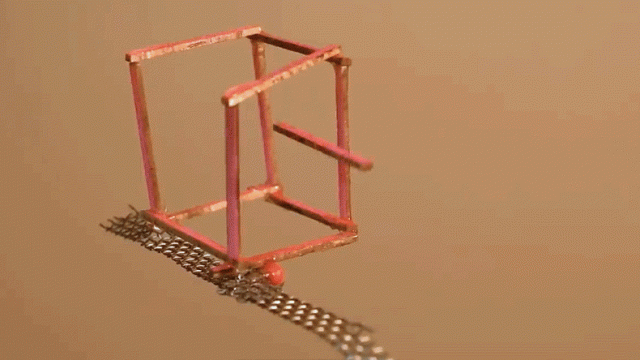What does the future of construction look like? Autonomous machines buzzing around a building site? Giant 3D printers extruding walls and floors? Looking forward even farther, researchers at the Public University of Navarre in Spain have been experimenting with using sound waves to make building materials simply float into position without any physical interaction required.
Although still a part of many fantasy flicks and magicians’ routines, levitation is no longer just an illusion. Researchers have been experimenting with using ultrasonic sound waves — well past the threshold of human hearing — to make objects float for quite a few years now. Sound waves generated by ultrasonic transducers have now lifted everything from two-inch styrofoam balls to a grid of tiny particles. Even irregularly-shaped objects have been made to float, but to date the technology has seen limited real-world applications.
Researchers from the Public University of Navarre’s UpnaLab and the University of São Paulo, in Brazil, propose the use of acoustic levitation as a way to complement the rapid additive manufacturing techniques many industries now rely on, from amateur hardware hackers to aerospace engineers. The team created an acoustic levitator that can generate acoustic fields capable of trapping and holding elongated objects like sticks and other materials, and then attached it to a robot arm that allows these objects to be accurately positioned and assembled onto a larger structure without any physical contact.
Even more impressive is that the levitator isn’t limited to just manipulating solid objects. It can also pick up liquids and even materials like glues or resins, which are then used to bond components together. In a video demonstrating its capabilities, the levitator applies drops of an adhesive to a simple matchstick structure, which can be instantly hardened with a quick blast of ultraviolet light.
In its current form, the researchers’ machine can’t be used to construct a building. Its lifting capabilities are still limited to small, lightweight objects like wooden matchsticks. But that doesn’t mean it’s useless until it can be scaled up to handle larger projects.
Building the incredibly small or detailed components that go into electronics or other devices often comes with its own challenges, including developing machines that can safely handle small and extremely fragile parts. That’s where this acoustical manipulator could be immediately useful. And because there’s no physical contact made with the material being handled, acoustic levitation could be particularly useful for handling hot materials that pose a risk of damage through physical contact, or even bio-materials, as the sound waves pose no risk of cross-contamination.
The researchers even demonstrated situations where their acoustic levitator can move and reposition parts behind barriers or inside existing structures: something impossible for 3D printers and very tricky for physical manipulators, depending on where a part needs to end up.
You can read more about LeviPrint in the researchers’ recently-published paper, which was presented at the Siggraph 2022 conference which just recently wrapped up in Vancouver, British Columbia.
